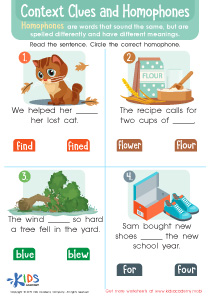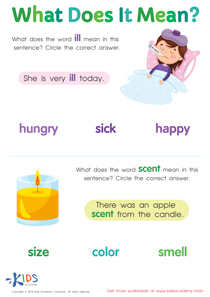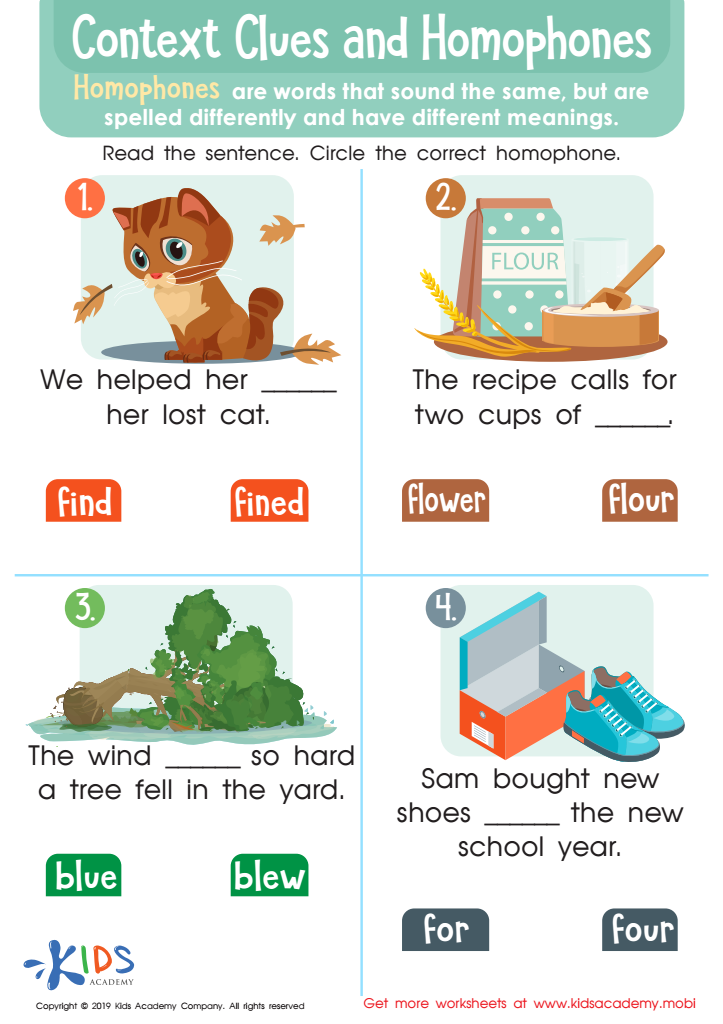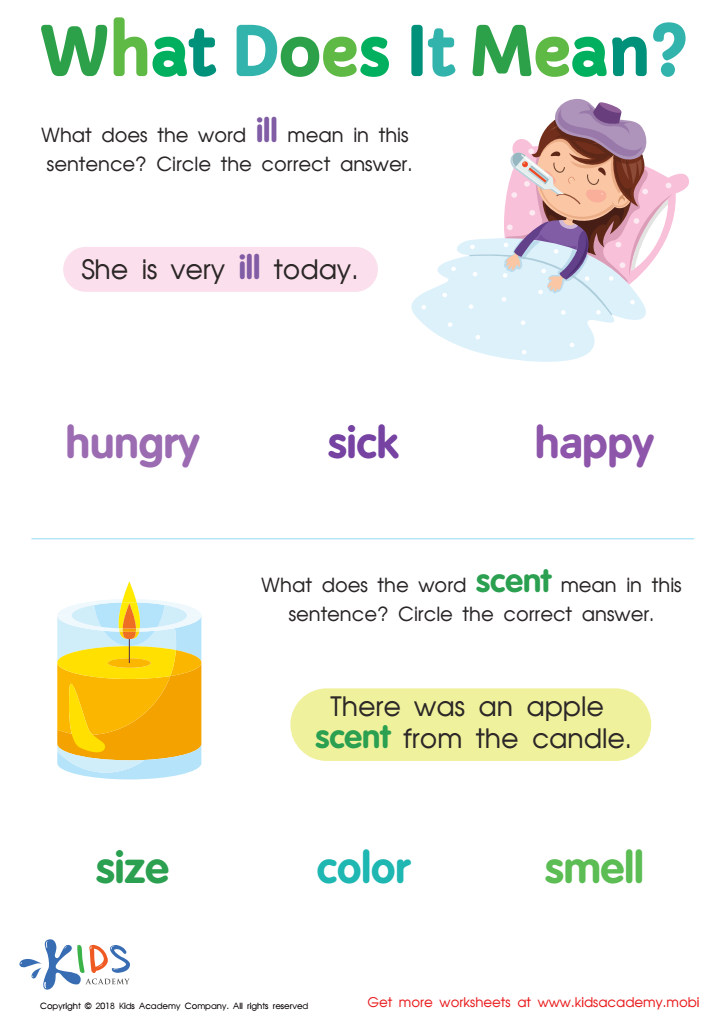Use Context to Confirm or Self-Correct Word Recognition and Understanding, Rereading as Necessary - Lesson for Grade 2, Chapter - Fluency
In this lesson titled "Use Context to Confirm or Self-Correct Word Recognition and Understanding, Rereading as Necessary," second-grade students will embark on a journey towards enhancing their comprehension and fluency skills, pivotal elements in the unit of Accuracy and Fluency. Through engaging activities such as the Context Clues and Homophones Worksheet, and the What Does It Mean? Worksheet, students will learn to skillfully navigate through sentences and passages to uncover the meaning of unfamiliar words using context clues. They will also delve into the world of homophones, words that sound the same but have different meanings, learning to distinguish between them based on the context in which they are used.
Understanding the significance of context in reading is crucial for students at this developmental stage as it lays a solid foundation for effective communication and comprehension skills. This lesson is designed to empower students to become more independent readers, reducing their reliance on external help by equipping them with strategies to self-correct and confirm their understanding of the text. Moreover, by learning to reread and adjust their understanding as necessary, students enhance their ability to process information more deeply, which is fundamental for lifelong learning and academic success.


-
Activity 1 / Context Clues and Homophones Worksheet
Before beginning this worksheet, you might want to first make sure that your kids understand what homophones are. Homophones are two or more words which sound the same, but are spelled in completely different ways, with different meanings. Give your kids some examples of homophones and then look at the printout. Read each sentence to your child, and sound out the words carefully. Help them circle the correct homophone.
-
Activity 2 / What Does It Mean? Worksheet
Your students should by now be able to read words and easily know their meaning, even when used in different contexts. This worksheet has two sections. In the first one, there is a picture on the right side. Ask your students what the word ‘ill’ means in the sentence ‘she is very ill today’. Help them circle the correct answer from the options provided. The second section follows a similar pattern, and your kids must circle the correct answer to the question.



